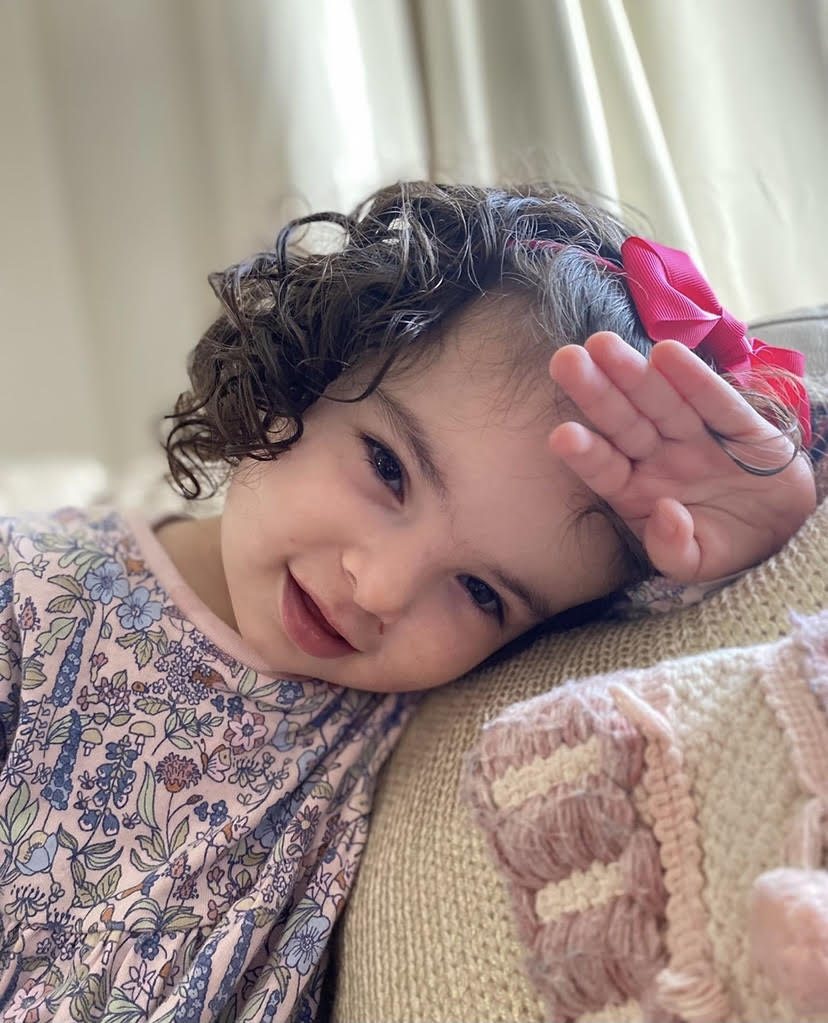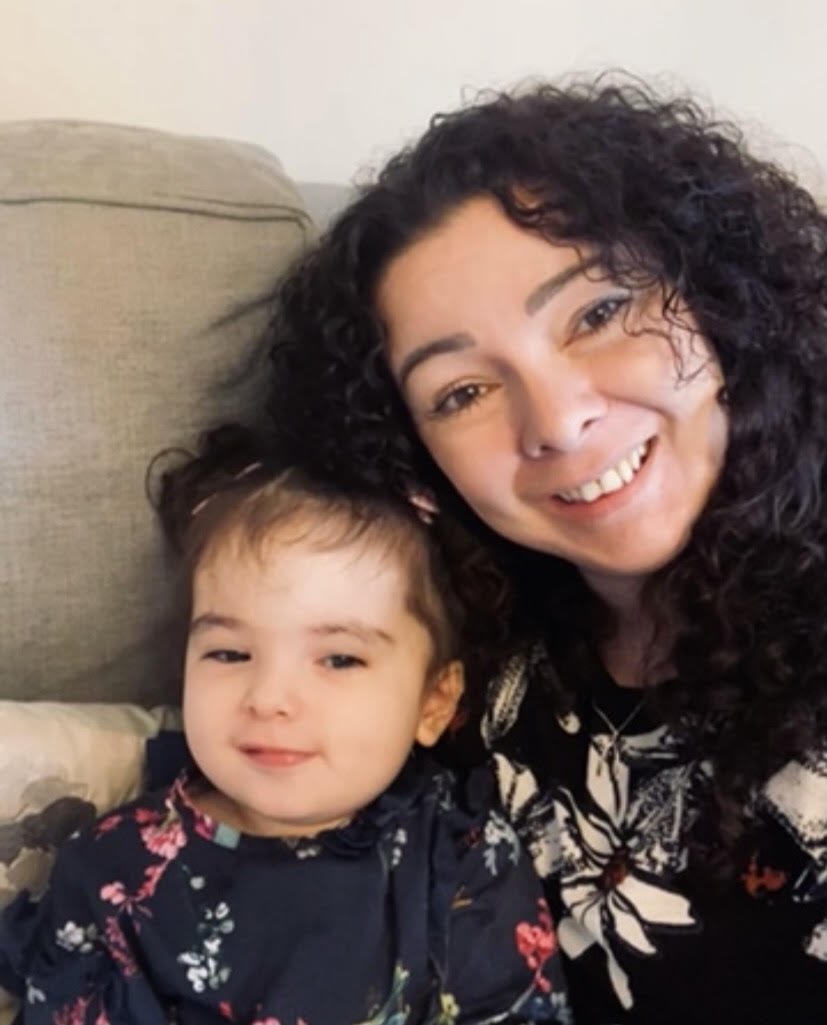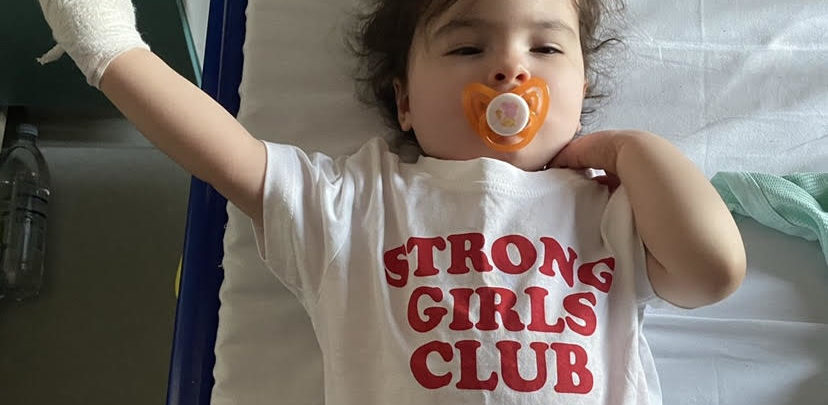Mya was diagnosed with Osteogenesis Imperfecta (OI) in utero. She is now 2 years old and a type 4 which is moderate to severe.
We found out at our 20 week scan that she had bent femurs, and there was uncertainty about the severity of her presentation. We were told that at the time her survival was also questioned.
There was uncertainty about the actual diagnosis at this point but we knew it was a possibly skeletal dysplasia, affecting either her legs or her entire body structure.
We found out at 25 weeks gestation that she had healed fractures and it was likely to be Osteogenesis Imperfecta (also known as brittle bone disease).
How Mya’s condition affects her day-to-day life
Mya was born via Caesarean section at 37 weeks. She arrived in the world screaming and healthy. She had a full skeletal assessment and was officially diagnosed.
Mya was referred to the metabolic bone team at Sheffield specialist Children’s hospital and began a biphosphonate treatment a few weeks later. This is a regular bone infusion to help to add volume to her bones and also acts as a long-standing pain relief.

Mya is fragile and can fracture easily, and unfortunately, Osteogenesis Imperfecta is not limited to bones. It can affect other organs and also has many sub symptoms in everyday life. Mya does tire easily and needs additional rest. She bruises and injures her joints and ligaments, and every fall or trip can be risky.
Mya had a brain bleed in December 2020 resulting from a small fall, and we spent Christmas in the hospital. She remains under neurology for reviews. She had a nasty femur fracture and was in traction and a spica cast last summer, and is now awaiting rodding surgery on both her legs.
Mya is surrounded by professionals and spends a lot of time in hospital, yet still she smiles. She’s a happy little girl who loves to sing and dance. She is confident and enjoys a fun-filled life.

As parents, we were anxious to receive this diagnosis and more afraid that our daughter would experience discomfort and suffer. We had no prior knowledge of OI and as it is a rare condition, the information available is limited and led by a negative scope.
It was only when we became a part of the OI community, did we really see the balanced view and realise that although our story was initially traumatic, it is also full of hope and pride too.
We take pride in everything Mya does, and she does it at her own rate and in her own way. My main thesis is that although she is born different, this will simply make her stronger and more resilient.
She will fracture again and again, this remains fact. She will have many hospital admissions and surgeries and she will experience trauma and pain. She will require a wheelchair and will use this when she’s injured or too tired to walk far, yet nothing will stop her from pursuing her dreams.
There is a highlighted need to raise awareness and educate people in what it is and what it is not.
As OI affects 1 in 20,000 people, it remains rare and misunderstood. These children are amazing with the resilience and strength of warriors.
We do not need to wrap them in cotton wool and remove all opportunities for fear of injury. Instead, we need to ensure the environment can accommodate their needs to enable them to fulfil their own potential.
Disability is not inability. It simply means that each person has a narrative and may need different resources or changes to enable opportunity.
I honestly feel it’s about the education of others. I honestly believe that to change the world, first we need to change each other. I believe that the more this is spread, the better known this condition can become. This can reduce social exclusion, stigma, perceived limitations, negative ideations, and promote hope.





Leave a Comment
You must be logged in to post a comment.